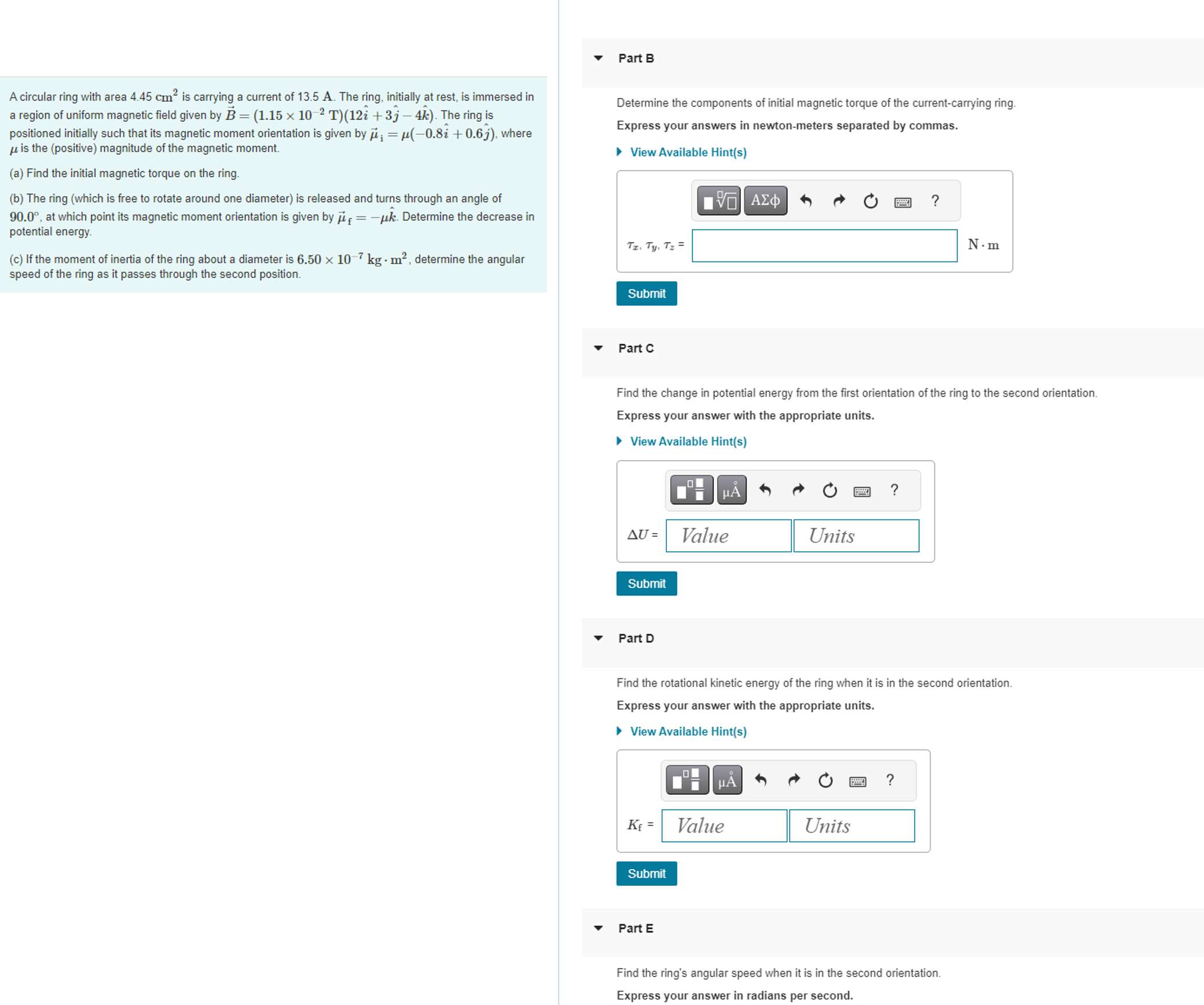(Solved): A circular ring with area 4.45cm^(2) is carrying a current of 13.5 A . The ring, initially at rest, ...
A circular ring with area
4.45cm^(2)is carrying a current of 13.5 A . The ring, initially at rest, is immersed in a region of uniform magnetic field given by
vec(B)=(1.15\times 10^(-2)(T))(12hat(i)+3hat(j)-4hat(k)). The ring is positioned initially such that its magnetic moment orientation is given by
vec(\mu )_(i)=\mu (-0.8hat(i)+0.6hat(j)), where
\mu is the (positive) magnitude of the magnetic moment. (a) Find the initial magnetic torque on the ring. (b) The ring (which is free to rotate around one diameter) is released and turns through an angle of
90.0\deg , at which point its magnetic moment orientation is given by
vec(\mu )_(f)=-\mu hat(k). Determine the decrease in potential energy. (c) If the moment of inertia of the ring about a diameter is
6.50\times 10^(-7)kg*m^(2), determine the angular speed of the ring as it passes through the second position. Part B Determine the components of initial magnetic torque of the current-carrying ring. Express your answers in newton-meters separated by commas. Part C Find the change in potential energy from the first orientation of the ring to the second orientation. Part D Find the rotational kinetic energy of the ring when it is in the second orientation. Part E Find the ring's angular speed when it is in the second orientation. Express your answer in radians per second.
